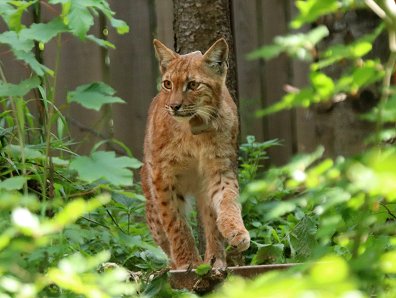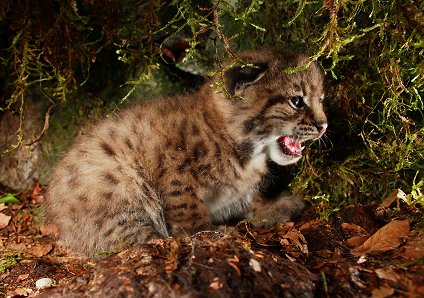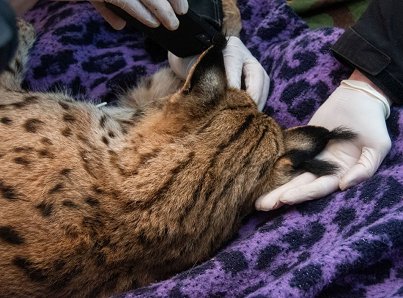New research confirms successful recovery of the Eurasian lynx population in the Dinaric Mountains and the Julian Alps
Lynx Max released in Snežnik plateau, Slovenian Dinaric Mountains. Photo: Miha Krofel
The Eurasian lynx used to be considered the most endangered mammal species in Slovenia, with population on the brink of extinction due to inbreeding. To prevent extinction, an international team of experts carried out a large-scale programme between 2017 and 2023, within the LIFE Lynx and ULyCA2 projects. Among other activities, 22 lynx were translocated from the Carpathians to the Dinaric Mountains and the Julian Alps. Throughout the process, the effects of the translocations on the lynx population, on ecosystems and on the opinions of local people were carefully monitored. The results of these studies, led by researchers from the University of Ljubljana, Biotechnical Faculty, have now been published in a series of scientific papers.
Translocating large carnivores to restore their populations and the role they play in nature is a very complex process. Similar projects have repeatedly failed due to animal deaths or opposition from local populations. To understand the success of lynx conservation efforts, researchers have tracked the translocated lynx through GPS telemetry, systematic camera-trapping, generic analyses and polls among hunters and local people before, during and after the translocations.
Over 50 lynx kittens from translocated parents have already been detected. Important improvement is also that the average number of kittens in litters by translocated lynx is over a third larger than in lynx from the remnant population, which suffered from severe inbreeding depression. Photo: Miha Krofel
The results showed that the majority (68%) of translocated lynx successfully integrated into the population and at least 59% managed to reproduce. The successful integration was also reflected at the population level, as the declining trend has reversed and lynx densities increased by 44% in the Slovenian and Croatian Dinaric forests between 2019 and 2023. Already in the first years, a significant reduction in the inbreeding rate has been observed, thus mostly eliminating the main threat to the population. Transparent communication and close cooperation with hunters and local communities have contributed significantly to the success of the project, as the high level of support for lynx conservation and translocation has been maintained throughout the years of conservation efforts.
"All the data collected showed that saving the lynx population has been more than successful. We have given the species a good chance of persisting in our forests and mountains for decades to come," said Dr. Miha Krofel from the Biotechnical Faculty, who led the study published these days in the scientific journal Ecological Applications.
Study was funded by European Union (projects LIFE Lynx and Biodiversa+ Big_picture) and the Slovenian Research and Innovation Agency (project ExtremePredator).
Sustainable development goal: 15 – Life on land
Original articles:
- Krofel, M. et al. 2025. External link to Multidisciplinary monitoring and stakeholder engagement support large carnivore restoration in human-dominated landscape. Open in new window – Ecological Applications, 35: e70052.
- Fležar, U. et al. 2025. External link to Hunter-engaged monitoring of the Eurasian lynx during the reinforcement process. Open in new window – Wildlife Biology, e01399.
- Pazhenkova, E. et al. 2025. External link to Genetic rescue of the Dinaric lynx population: insights for conservation from genetic monitoring and individual-based modelling. Open in new window – Evolutionary Applications, 18: e70045.
Contact for further information: Miha Krofel, Biotechnical Faculty, University of Ljubljana,
Before the LIFE Lynx project, the lynx in Slovenian forests that were descendants of the 1973 reintroduction suffered from inbreeding, such as heart failures. On this picture is lynx “Igi”, who had deformed ear (two ear tufts instead of one) and later died due to a heart defect. Such health issues were no longer observed among the translocated lynx and their offspring. Photo: Maj Hočevar



